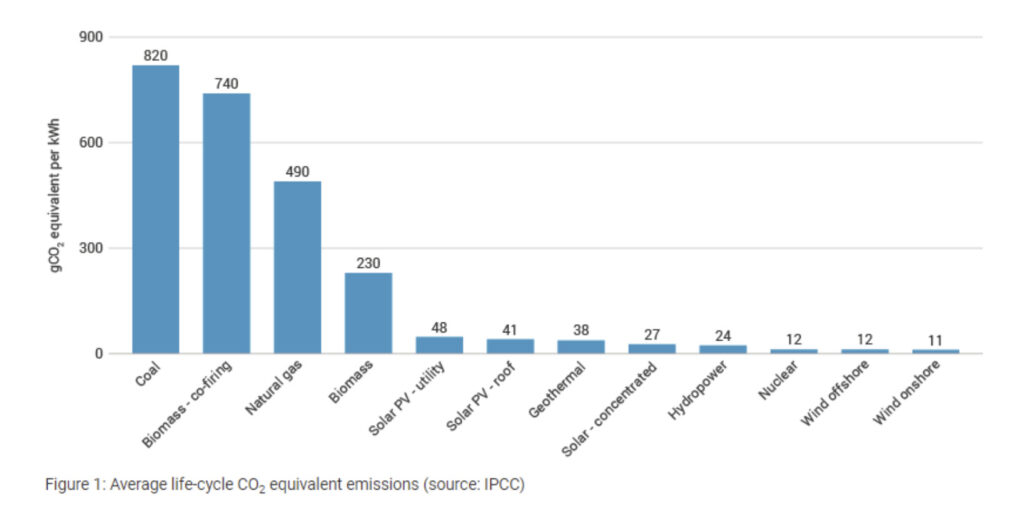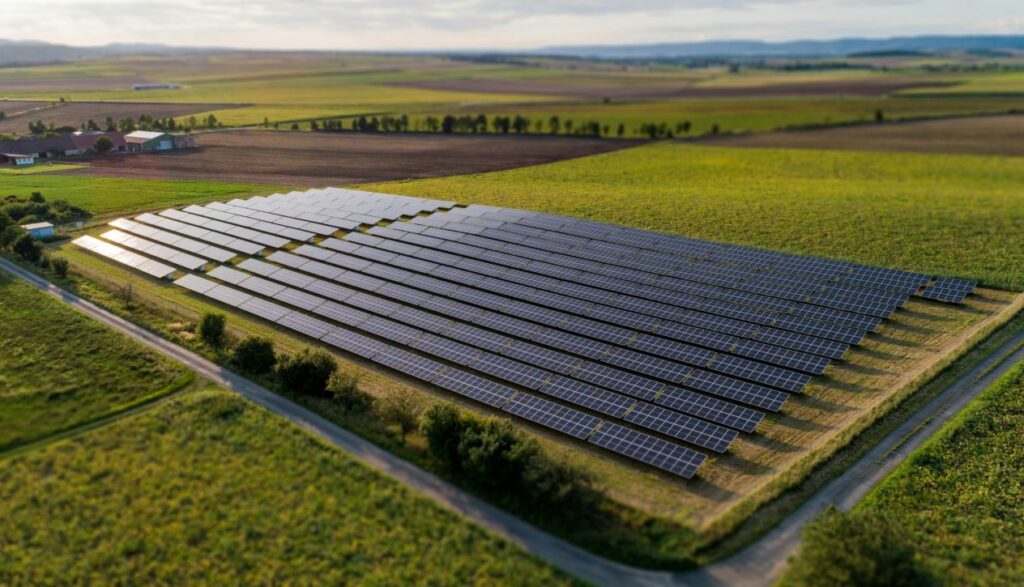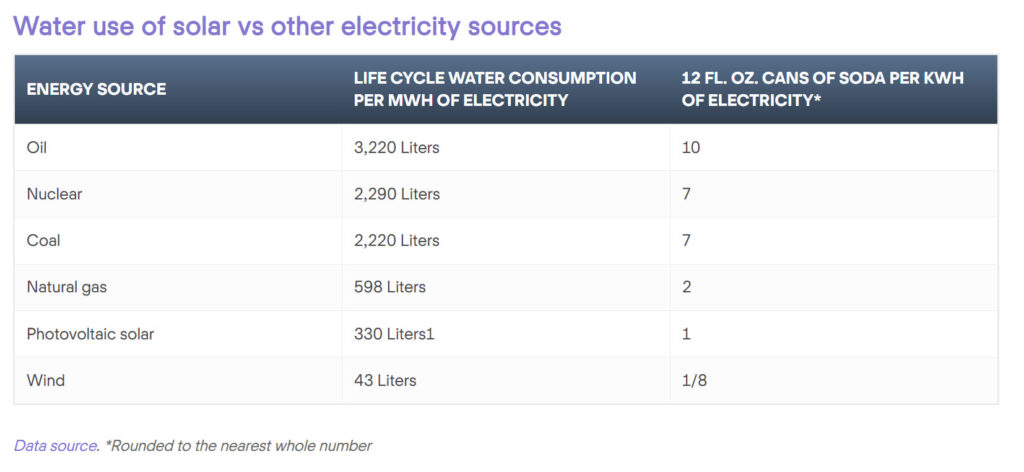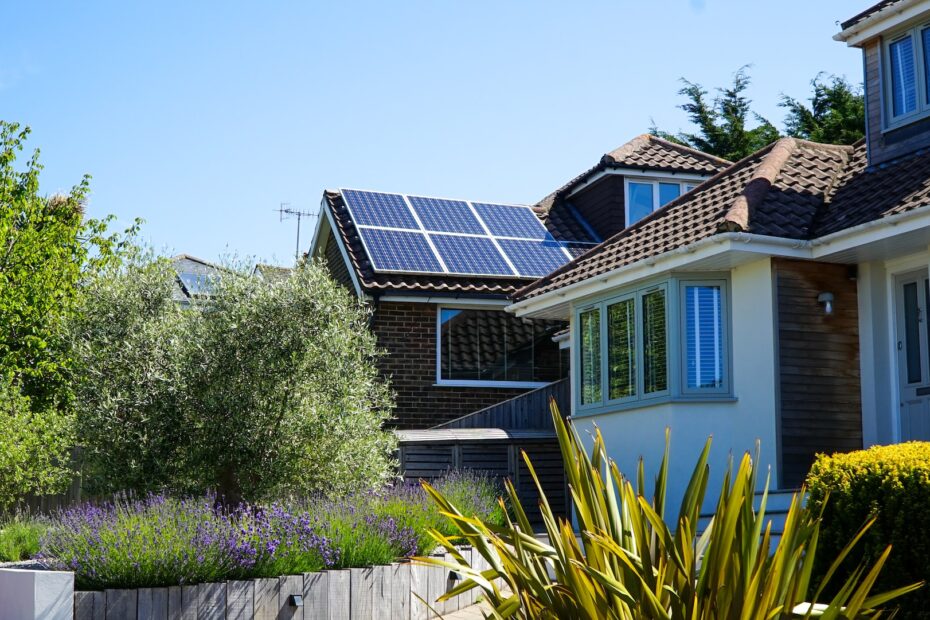One of the more popular topics discussed by homeowners considering ‘going solar’ is looking into what the benefits are of actually doing so. Below are four of the benefits homeowners should consider: increase in property value, lower electricity bills, energy independence, and environmental effects.
Increase In Home Property Value
While every home is different, there are several ‘rules of thumb’ about how much solar panels can increase a home’s value. Zillow analyzed a year’s worth of home sales in 2018-2019 and found that homes with solar panels sold for 4.1% more on average than comparable homes without solar. That equated to an average $9,274 markup on the median home value when the study was conducted. Also, there was a 10-year study concluded in 2015 by the Lawrence Berkeley National Laboratory which found that solar panels add around $4 per watt of capacity installed – or $4,000 per kW. The table below shows how this builds based on the size of the system on the home:

It should be noted that these figures are averages based on hundreds of thousands of home sales. Also, the precise value that solar panels add to your home depends on a number of other factors including location, market value, size of the energy system, age of the system and components, the efficiency of the system, etc.
Another part of the value comes from claiming the full 30% Federal Tax Credit, which essentially means that while you have paid for 70% of the solar system, you still receive 100% of the value it adds to your home. This tax credit brings your net system cost down while increasing home value.
The obvious question that should be asked if solar increases your home value is: will this lead to higher property taxes? Since property taxes are based on home value, it makes sense that they might increase as a home appreciates. The good news is that, as of October 2022, there is some form of property tax exemption for solar panels in 34 states. However, Pennsylvania does NOT allow for a property tax exemption, unfortunately.
Homeowners typically recoup the cost of solar panel systems from the sale of their home. In fact, since energy efficiency upgrades are becoming more popular among homebuyers, solar panels can help your home sell faster and for more money.
Lower Electricity Bills
Electricity is used for everything from air conditioning to TVs, computers, and even automobiles. Solar panels help to fix your electricity costs at a low rate, which is the best way of reducing your electricity bill without making any huge cuts in your energy usage.
The price of electricity is measured in cents per kilowatt-hour (kWh). According to the US Bureau of Labor Statistics, the national average price for electricity in June 2023 was $0.17 per kWh. Grid electricity rates are already much higher than solar, and they will continue to increase over time. In the last 20 years, the price of grid energy has increased by 2.79% per year on average, according to the Bureau of Labor Statistics. But in 2022, the average rate increased 12.6% in one year! The EIA is projecting another above-average rate increase of 3.77% from 2022 to 2023. Utility rate increases are the rule — not the exception.
Going solar fixes your electricity costs for the lifetime of the system.
Here’s how paying for solar versus grid electricity looks over 20 years when accounting for 2.79% rate hikes based on the historical average and 5% rate hikes that are more in line with the average rate of inflation.

So solar panels do two things to reduce your electric bill:
They set the price you pay for electricity lower than the grid, and they shield you from the ever-rising cost of electricity from the utility grid.
Energy Independence
Having an energy-independent home means producing and storing your own electricity to minimize your reliance on the electrical grid. With energy storage technology advancing so rapidly, you can cost-effectively rely on a combination of solar panels with a battery backup to satisfy your household energy needs.
There are a lot of very good reasons to be more energy-independent. You won’t be subject to utility rate increases since you’ll be in complete control of how you get your energy. You will also enjoy the peace of mind of knowing exactly where your power is coming from. The energy you’re consuming will be 100% renewable, unlike power sourced from the utility grid, which is still reliant on fossil fuels. Your system also provides your own backup power during outages on the grid when you use a battery storage solution along with your solar panels. By producing your own energy, you are removing additional stress on the local grid, which also helps the overall energy system in your local and state community. This helps to decrease the country’s overall reliance on fossil fuels and the negative impacts that have on climate change.
While becoming energy-independent may sound like a challenging task, it consists of two main steps:
Step 1: Electrify everything in your home. Swap out appliances that run on gas for those that run on electricity. There are incentives for most major appliances that took effect on January 1, 2023. Since electricity is cheaper than gas, you’ll more than earn back you’re upfront costs through cheaper operating costs over time.
Step 2: Install a solar panel system with battery storage in your home. Solar panels provide clean electricity for your home, and battery storage technology provides a method for using it when the sun isn’t shining or emergencies occur.
Battery backup is an important method for having power during a blackout. Even though you have connected your solar system to the electrical grid, you could still experience power surges in your home.
There are also more options when your solar panel system has a surplus of energy. That excess photovoltaic energy can either be exchanged for net metering credits, stored in a solar battery, or a combination of both. Pennsylvania uses the Net Metering system which allows you to sell excess solar electricity back to the utility at the same price at which you would buy it.
Environmental Benefits
Emissions
Maybe the biggest environmental benefit of solar energy is its incredibly small carbon footprint. According to the International Panel on Climate Change (IPCC), the lifecycle emissions per kWh of electricity produced by rooftop solar are:
- Around 12 times less than electricity generated by natural gas
- Around 20 times less than electricity generated by coal

The term lifecycle emissions is important because it includes the carbon footprint of manufacturing solar panels (where most of its emissions come from) to decommissioning them at the end of their useful life.
Over 25 years, the average rooftop solar system offsets approximately 200,000 pounds of CO2 equivalent emissions. It’s worth noting that reducing CO2 and other emissions isn’t only about curbing climate change, it’s also about improving the quality of the air that supports life on Earth.
Land Use
Land use may sound like an odd environmental benefit of solar energy, especially if you picture sprawling solar farms covering desert landscapes, but a 2022 study by the National Renewable Energy Lab (NREL) found that the land required for all of the solar, wind, and transmission infrastructure to ‘decarbonize’ the US power sector by 2035 adds up to less than 1% of the available land in the continental US. In fact, it’s less than half of the land dedicated to active oil and gas leases.
Agrivoltaics is a good example of complimentary land use. It is the practice of siting solar panels above crops and livestock areas, and it’s been found to increase certain crop yields by shading plants from intense sunshine and retaining ground moisture. Additionally, it provides a secondary source of income for farmers.

Water Use
Fresh water is crucial to our environment, but it’s typically not the first thing people consider when it comes to generating and distributing energy. However, transitioning to renewable energy – namely wind and solar – could free up massive amounts of fresh water for farming and aquatic ecosystems.
In 2019, a review of 32 water use studies found that the median life cycle water consumption of photovoltaic solar is 330 liters per megawatt-hour of electricity, which boils down to just under 12 fluid ounces of water (a can of soda) per kilowatt-hour (kWh) of solar electricity.
When you compare this to other types of electricity generation, solar energy uses:
- Half of the water of gas-fired power plants
- Seven times less water than nuclear and coal power plants

Mining & Materials Use
Mining for materials is usually considered a big blemish on the environmental impact of solar, given that mining for the silicon, aluminum, copper, and silver used to manufacture solar panels is environmentally problematic. This is something that the industry must address in the future.
In 2023, data scientist Hannah Ritchie crunched the numbers on the total mining needs for a clean energy transition and found that to rapidly transition to a clean energy economy, we’d need to scale “low-carbon” energy mining up to 28 million tons of materials per year – about 7 times the amount we’re currently extracting. While that sounds like a lot, it is very small when weighed against the 15 billion tons of coal, oil, and natural gas currently being mined each year by the fossil fuel industry. The billions of tons of fossil fuels extracted each year is around 535 times more than the total mining tonnage required for a clean energy economy.
Noise Pollution
While solar energy is better for the environment than fossil fuels in terms of air, land, water, and mining, one of the most overlooked environmental benefits is that it’s quiet.
Like any energy source, there is noise associated with manufacturing and installing solar panels. However, with no moving parts or combustion, solar panels themselves are virtually noiseless except for a soft hum from the inverter, which is capped at 45 decibels (about the volume of a quiet room) and only occurs during the day.
Meanwhile, coal and natural gas power plants generate, on average, 80-85 decibels – somewhere between a vacuum cleaner and city traffic.
While people often think of “the environment” as places where humans are not, in reality it is everything that impacts life on Earth, including the air, water, land, materials, and even noise. And when compared to fossil fuels, solar energy has a substantially smaller impact on the environment in all of these areas.
